
One of the most anticipated musical experiences, Taylor Swift’s ‘Speak Now Tour’, arrives in Australia and New Zealand in March 2012 at the following locations with tickets going on sale at 9am on August 26th.
Perth: Friday March 2nd - Burswood Dome
Adelaide: Sunday March 4th – Adelaide Entertainment Centre
Brisbane: Tuesday March 6th – Brisbane Entertainment Centre
Sydney: Friday March 8th – Acer Arena
Melbourne: Tuesday March 13th – Rod Laver Arena
Auckland: Friday March 16th – Vector Arena
The ‘Speak Now’ performance is a two hour theatrical presentation more reminiscent of a Broadway extravaganza featuring elaborate costumes, dancers, aerialists, changing sets, innovative choreography and instrumentation showcased on a multi-level stage. The four-time Grammy winner Taylor plays five different guitars in the show, plus two banjos, the ukulele and the piano, and changes costumes nine times over the course of the evening.
Currently performing to sold-out stadiums and arenas on the North American Taylor’s Speak Now tour has earned high praise from top critics around the world:
“One of the genre's most ambitious acts has created one of the genre's most ambitious tours. Broadway-inspired! the two-hour production was an overwhelming experience.” - Billboard
“[‘Speak Now’] went off, as did every number, with clockwork professionalism and thousands of voices singing along and screaming between the lines. Ms. Swift, 21, is their superstar!” - The New York Times
In Australia ‘Speak Now’ is a number 1 double platinum album, following five-times platinum album Fearless, bringing her total album sales in Australia to in excess of 600,000.
Don’t miss Taylor Swift’s incredible Speak Now World Tour.


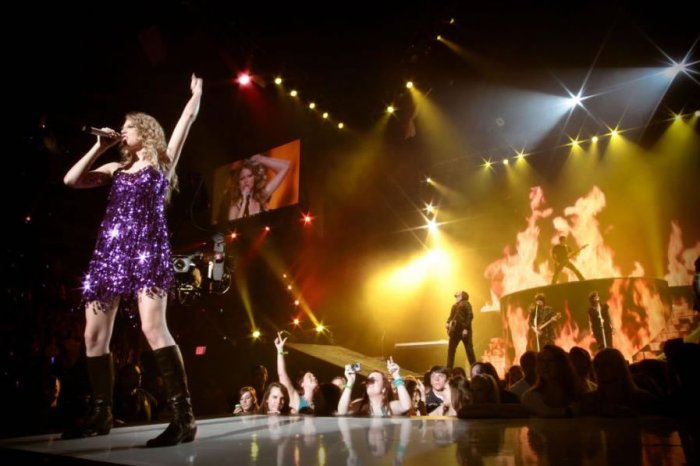

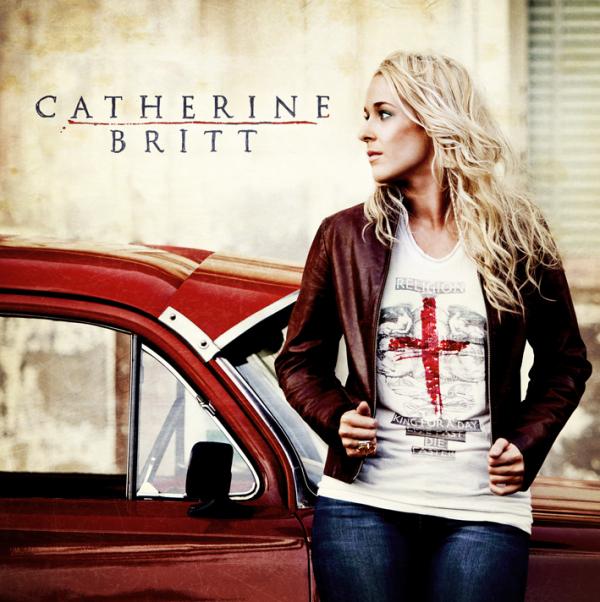 When your first recording makes it to the Top 5 of the Country charts while you're just in your teens, it might be an accident. But when you follow this with your first album and many of the songs on it written by you reaching the Top 5 to rave reviews around the world, then that's talent. And that's precisely what Catherine Britt has, and lot's of it.
When your first recording makes it to the Top 5 of the Country charts while you're just in your teens, it might be an accident. But when you follow this with your first album and many of the songs on it written by you reaching the Top 5 to rave reviews around the world, then that's talent. And that's precisely what Catherine Britt has, and lot's of it.
Born in Newcastle, Australia in 1984, her father was a music buff who sidelined in amateur radio and confesses to listening to Hank Williams music while all his buddies were deep into Led Zeppelin. It must have really influenced her because Catherine has a tattoo of Hank Williams on her leg. She started singing before an audience when she was 11 years old and the success led to a string of accomplishments hard to imagine for any artist so young.
Encouraged by her parents, she asked Bill Chambers if she could join him and his ‘The Dead Ringer Band’ in singing an old Jimmie Rodgers song. Her singing knocked Chambers out and since then, he and his daughter, country star Kasey Chambers, have been Britt's guiding lights. Chambers produced Britt's album and Kasey co-wrote some songs and took her on tour.
In 2002, Elton John during his tour of Australia was so impressed with Britt's album that he invited her to his concert in Sydney. They later on, in the USA, recorded a duet of one of the songs she had written. In the same year, Chris Isaak asked her to perform as a special guest on the Australian phase of his tour. In the Toyota Country Music Awards at Tamworth, she reached the Top 10 in every category in which she qualified, and a Top 5 in the New Talent section.
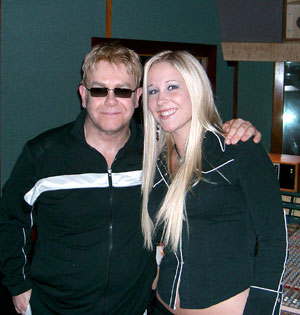
Britt moved to Nashville to further her career. There she became the youngest Australian performer at the Grand Ole Opry, and wrote songs with some of Nashville's top songwriters. She lived in Nashville for six years before deciding to return to Australia.
Back home, Britt won the 2009 Female Artist of the Year title at the CMAA Awards. She has embarked on a new phase of her career by making a new album, this time with Bill Chambers and Shane Nicholson as co-producer. The album, called ‘Catherine Britt’ harnesses all of her musical and songwriting talents to produce a biography in music and capture a whole range of experiences in her life. ‘Sweet Emmylou’, one of the songs in the album has just won for her Second Place in the 2011 Vanda and Young Songwriting Competition.
This month (August) Britt is scheduled to perform in ‘Dueting It for the Kids’ in Sydney, together in the company of a long list of Australia's country stars. It is a concert of duets with the proceeds going to the Australian Children's Music Foundation. The ACMF conducts music programs for disadvantaged and Indigenous Australian youth across the country.
Check out the Event Calendar Events Calendar to see where Catherine is playing next

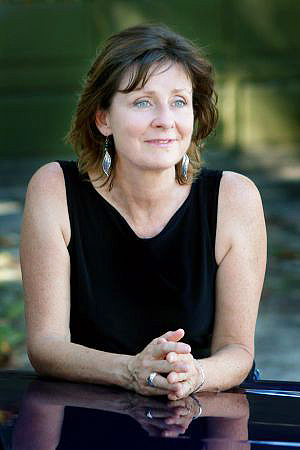 It's always hard to walk in your parent's footsteps, especially when the parent belongs to the category of an icon. But Anne Kirkpatrick, daughter of Australia's country music legend Slim Dusty and his equally renowned wife Joy McKean, has traced her parents' path with a steady stride, in the process carving for herself a unique identity.
It's always hard to walk in your parent's footsteps, especially when the parent belongs to the category of an icon. But Anne Kirkpatrick, daughter of Australia's country music legend Slim Dusty and his equally renowned wife Joy McKean, has traced her parents' path with a steady stride, in the process carving for herself a unique identity.
Anne was born in Granville, a suburb of Sydney, on July 4, 1952. Tagging along with her parents on the tour circuit from the age of 2, she had the ultimate insider's view of life in show business. Like her father, her career started when she was 10 years old as part of the travelling Slim Dusty Show. Until she was 11, her life was a carny's life, spent under the carnival tent, and her neighbors people who swallowed razor blades, jugglers and clowns. She helped her parents setting up to 24 sets a day at shows in Australia's capital cities, and rural ones as well. She looks at the Showman's Guild, of which her father was a lifetime member, as “family”. Then, having outgrown her correspondence courses, she was sent off to school.
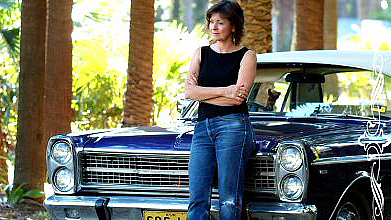
Starting with her first album “Down Home” which was released in 1974 while she was still studying at the university, her career was one upward rung after another towards country music fame. To date, Kirkpatrick has released thirteen albums earning for her awards and accolades. Along the way, she won 6 Golden Guitars at the Tamworth Country Music Festival, and several Mo Awards, given to artists for their achievements in live entertainment. In 1991, she won the ARIA Award for Best Country Album for “Out of the Blue”, besting top stars like Keith Urban, Graeme Connors and John Williamson. She recently became the 39th artist to be included in the Australasian Country Music Roll of Renown, of which her father was one of the earliest members.
Even with her deep roots in country music, Kirkpatrick has cast her talent net farther afield. Fondly referred to as the “godmother of Australian new country”, her songs have blended traditional country with country rock and bluegrass, inspired by the likes of Linda Ronstadt and Gram Parsons. In the 70's she formed the Anne Kirkpatrick Band, making the rounds of inner city pubs. She recorded some tracks for a series of children's albums leading to her signing up with ABC Country where her first album for the label featured songs giving traditional country her unique contemporary feel.
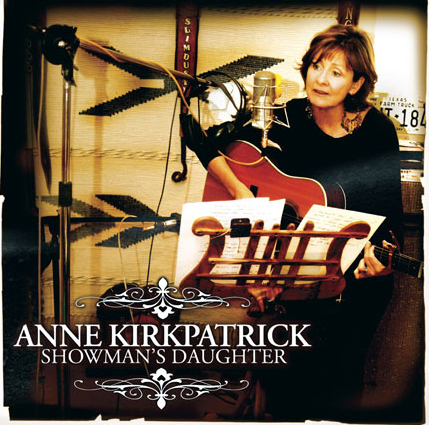
Her 2001 album “Travelling Still...Always Will” was Anne's tribute to her parents. It featured a number of duets with her father, and some solo tracks from both of them. This was the last album in which father and daughter would collaborate because Slim Dusty passed away in 2003.
The torch that Slim Dusty lit has not only passed on to Anne. In 1993, her album “Game of Love” featured tracks with her brother David and her 2006 release of “Showman's Daughter” had contributions from her son, James Arneman, insuring their reputation as the First Family of Australian country music.
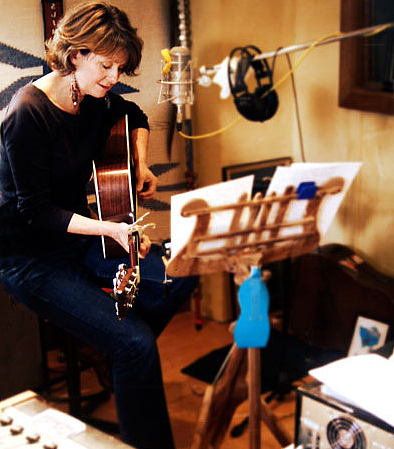
 In 1982, the Webb Brothers, a trio based in Gympie, Queensland won a Golden Guitar at the Tamworth Country Music Festival for their song ‘Who Put the Roo in the Stew?’. To celebrate the occasion, the Apex Club of Gympie threw a fund-raising party at the winners' 100-year old property in Thornside. The dinner and ball on that Saturday evening was followed by a show with selected acts on the following day.
In 1982, the Webb Brothers, a trio based in Gympie, Queensland won a Golden Guitar at the Tamworth Country Music Festival for their song ‘Who Put the Roo in the Stew?’. To celebrate the occasion, the Apex Club of Gympie threw a fund-raising party at the winners' 100-year old property in Thornside. The dinner and ball on that Saturday evening was followed by a show with selected acts on the following day.
The main stage for the show was by no means a five-star structure. Bush timber and tarpaulins loaned by Queensland rail covered the stage. Makeshift toilets and showers were set up, and drinking water had to be trucked to the venue. A season pass would go for $20 and it cost the organizers all of $9,600, which nonetheless yielded a profit of $12,000 for charity. The first National Country Music Muster was off to a good start.
After proving its viability over three years, the Apex Club, which still operates the Muster today, decided that larger, permanent facilities were needed to enable the festival to sustain its growth. The Amamoor Creek State Forest Park, owned by the Queensland Forestry Department was selected and the 1985 Muster was held in that location. With over 50 hectares of well-planned camping facilities complete with amenities, towering gum trees and placid lagoons, it was the perfect site for all the activities that would eventually make the Muster one of Australia's largest country music festivals. As the event grew in popularity and attendance, the organizers added more activities which now include the Bundaberg Rum Crowbar, a late night power-packed show; the Muster Club and the Talent Search which features many surfacing country artists.
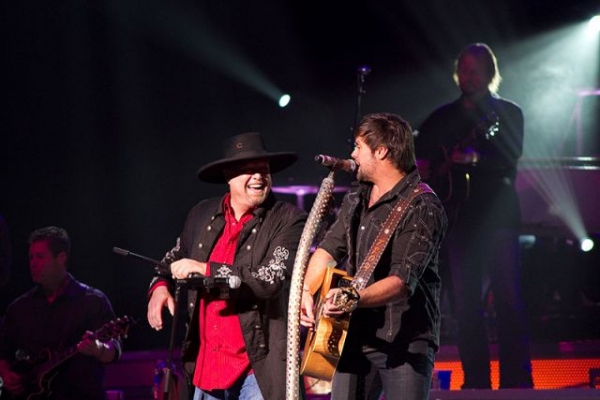
The Muster is operated for charity, as it has been from the beginning. In 1993, when Australia was reeling from a severe drought, the Club started the Rural Aid Appeal which annually raises up to $100,000 for a designated major charity by selling specially produced CDs and merchandise. Since the start, the Muster has raised over $14 million. Some of the charities that have benefited from this are Diabetes Australia, the Leukaemia Foundation, the Melanoma Foundation, Transplant Australia and many more. For the 2011 event, the designated charity is the Starlight Foundation which seeks to brighten the lives of children who are seriously sick and in hospital.
The 2011 Gympie Muster will start on Tuesday, August 23 and will last until Sunday, August 28
Montgomery Gentry,Kasey Chambers, John Williamson, Troy Cassar-Daley,Lee Kernaghan, Doc Walker (CAN), Adam Brand, Beccy Cole, Ash Grunwald, Jace Everett (USA), Adam Harvey, Boy & Bear, Graeme Connors, James Blundell, Shane Nicholson, James Reyne, Ross Wilson, Bryan White (USA), Sunny Cowgirls, Eugene Hideaway Bridges (USA), Catherine Britt, Bill Chambers, McAlister Kemp, Lowrider, Jasmine Rae, Alvin Youngblood Hart (USA), head up a star-studded lineup of artists who will perform an exciting mix of traditional and modern country music. 10 stages and 8 bars set up at the festival will feature folk, bluegrass, ballads, gospel, blues, bush poetry, line dancing, rock 'n roll and even a celebrity guest debate.
For the over 25,000 people who attend the Muster, 50 community groups and 2,000 volunteers will assist the organizers in making sure that everyone derives every drop of enjoyment that the festival has to offer.
For more information, visit their website Gympie Muster
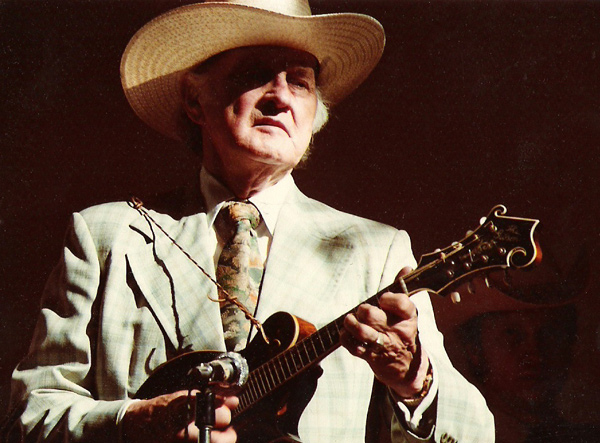 Traditional music brought by the English, Irish, Scottish and Welsh immigrants to the remote mountains of Appalachia, with a touch of jazz infused by African-Americans, was the inspiration of American bluegrass music. Traditional bluegrass is played using acoustic stringed instruments: the fiddle, guitar, five-string banjo, string bass and mandolin. At times, a dobro and harmonica join in. Bluegrass bands picked this selection from rural dance bands where these instruments were the ones used.
Traditional music brought by the English, Irish, Scottish and Welsh immigrants to the remote mountains of Appalachia, with a touch of jazz infused by African-Americans, was the inspiration of American bluegrass music. Traditional bluegrass is played using acoustic stringed instruments: the fiddle, guitar, five-string banjo, string bass and mandolin. At times, a dobro and harmonica join in. Bluegrass bands picked this selection from rural dance bands where these instruments were the ones used.
Reflecting the hardships of life in Appalachia, bluegrass songs are stories: tales of struggle and conflicts, love lost and changes forced on a dirt-poor land. This spirit, perhaps more than the vocal harmony which features a dissonant sound in the highest voice, should account for the description of bluegrass as a “high, lonesome sound”.
How the style came to be called “bluegrass” is part of the its folklore. Originally called plain “hillbilly” music, it was the singing style used by the Blue Grass Boys band of Bill Monroe, who hailed from Kentucky, the Bluegrass State. When other bands started to adapt the same style and a name for it had to be found, the most likely one was “bluegrass”, earning for Monroe the title of “father of bluegrass”.
Country music being what it is, other styles and genres crept their way into traditional bluegrass, raising the hackles of the traditionalists and creating some controversy along the way. Nevertheless, these are now the accepted sub-genres of bluegrass.
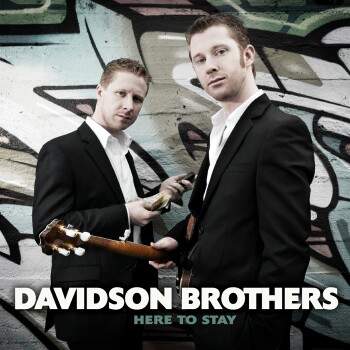
Traditional Bluegrass
Folk songs, simple chord progressions and acoustic instruments are the rule. Electrically amplified instruments are not used, although microphones are uallowed with the acoustic instruments when there are large audiences. Unless the songs are gospel-based, the guitar does not lead but acts as a rhythm instrument. Attempts to introduce other instruments like the accordion as part of the mix were rejected.
Progressive Bluegrass
Electric guitars, drums, piano and other instruments are used. Rock 'n roll songs as well as those borrowed from other genres are part of this style, as are chord progressions and improvisation in the jam-band style.
Bluegrass Gospel
Gospel music is incorporated into the artist's repertoire. Bluegrass Gospel artists make use of “a capella” choirs with a distinct harmony structure. Christian lyrics, soulful harmony singing and subdued instrumentals are part of this style.
Neo-traditional Bluegrass
Unlike most bluegrass bands which feature a solo artist, this style accepts more than one lead singer with the accompanying band.
Bluegrass enjoys a widespread following with many name performers recording bluegrass albums. Bluegrass festivals, like the Telluride Bluegrass Festival, have mushroomed, not just in the United States, but in such unlikely countries as the Czech Republic. A younger audience has jumped onto the bandwagon and come up with a style known as “jam grass”, blending bluegrass with jazz as a strong indication that bluegrass will continue to be a favorite of the generations to come.
Check out the Event Calender to see where the Davidson Brothers are playing next.


 Subscribe to RSS Feed
Subscribe to RSS Feed